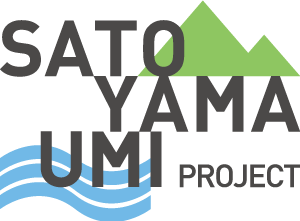
Anlung Pring became the first Cambodian
Flyway Network Site!

We have a great news!
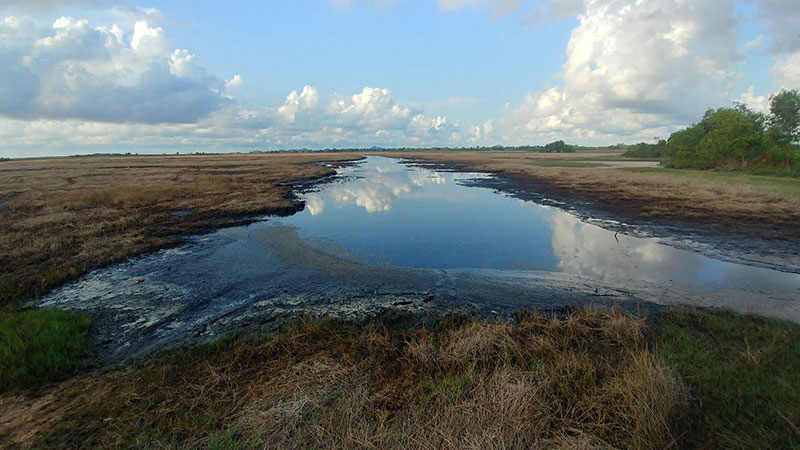
Anlung Pring Protected Landscape (AP) became the first Cambodian flyway network site under the East Asian-Australasian Flyway Partnership (EAAFP) on 7th May, 2019. EAAFP was launched in 2006, and aims to conserve migratory waterbirds and their habitats throughout the Flyway. The EAAF stretches from Russian through East Asia and South-east Asia to Australia and New Zealand, and there are currently 145 Flyway Network Sites.
BirdLife International Cambodia Programme has worked in AP since 2004, improve legal status and regional and international recognize about the global importance of the site are our priority work. We hope that AP is more internationally recognised and has more visitors around the world.
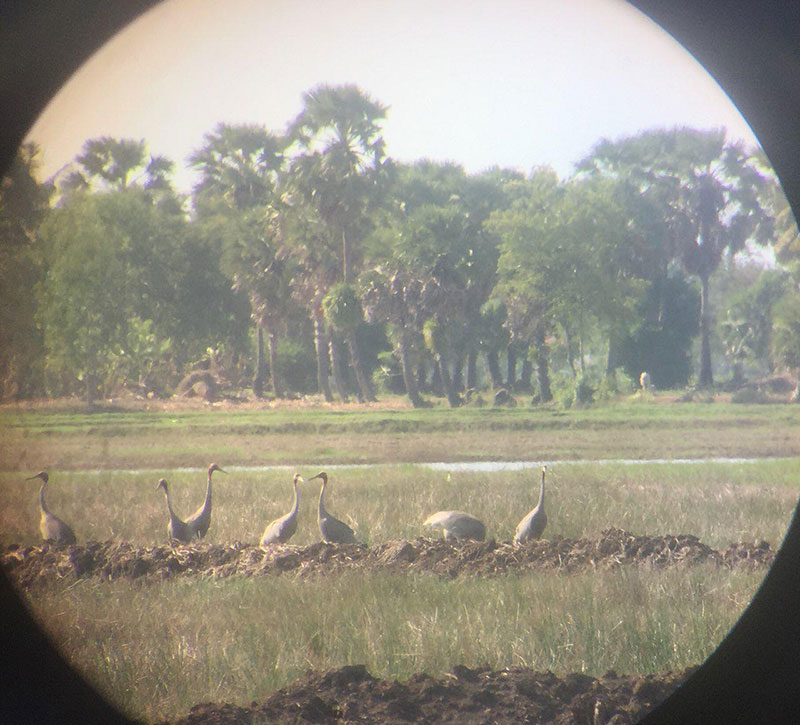
At the same time, the Sarus Cranes left AP in late May 2019 that supposed to be at a nesting site in the Northern part of Cambodia, has been back to AP again since early June, 2019.
According to our field team, eight Cranes might come from the other feeding site in Vietnam (Phu My Wetland). They have stopped at AP to get more foods before flying to the nesting site in the Northern part of Cambodia (Preah Vihear Provine). The field team is keeping their eyes on those eight Cranes.

Activities by Birdlife Cambodia Programme
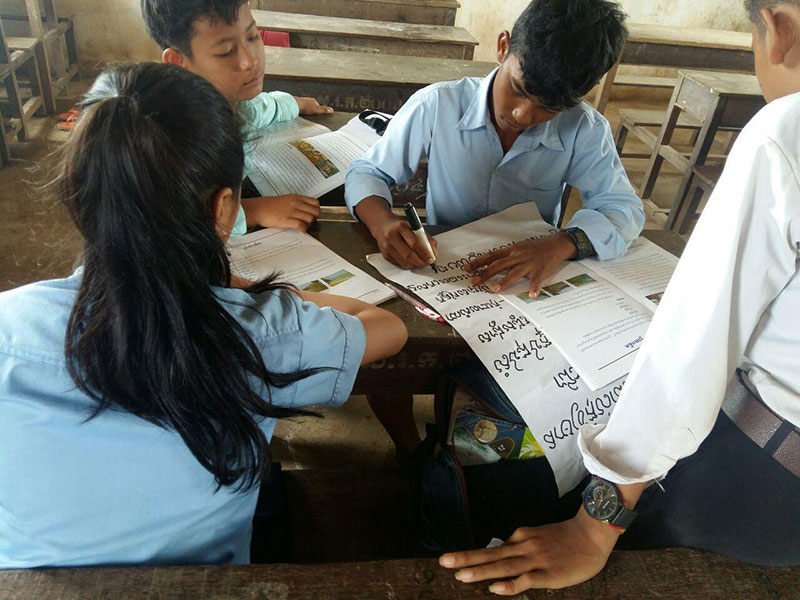
The students preparing their answer after group discussion
and observation to make a presentation to their classmates
Environmental Education Program
We continue monitor the teaching progression in two target primary schools in Boeung Prek Lapouv (BPL). Teachers were required to complete the evaluated forms after they finished teaching each lesson. Lyan has been collected all the evaluation forms from teachers every month.
The second edition of the environmental education material (EE material) was developed. A number of minor updates have been introduced into the EE material such as replacing pictures, updating information about the status of the habitat in BPL. At least 200 copies were provided to grade 4-6 students to support the program. Different from year 1, now, the students are allowed to bring the EE material home to read.
Four types of posters were developed and printed out to support the environmental education programme. These posters explain the habitats of the Sarus Cranes, habitats during the breeding season and none-breeding season, and threats of the Sarus Cranes and their habitats.
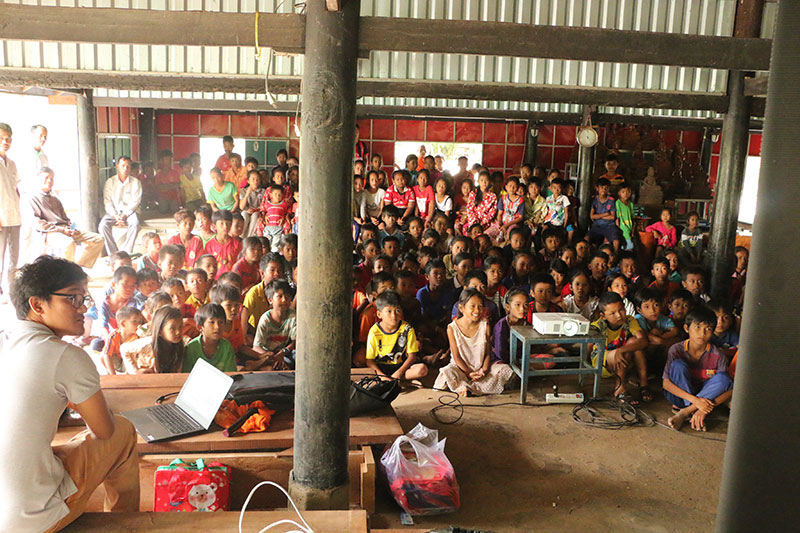
The local students joined the conducting film show
Sarus Crane Film
In Anlung Pring (AP), the Sarus Crane film shows was conducted in Koh Chamkar and Koh Thout villages in April 2019. There were around 120 local people joined. Not only educating local communities, the film show also provided a volunteering opportunity to two university students to gain experiences of organising events, logistic support and communicating with local authorities.
Sarus Crane film show in BPL was also conducted in two villages with participation of 170 local villagers. We also organized this film show at non-project target school of Kaev Kamphleung primary school with 246 students. Moreover, during the film show, we also received the support from village chiefs and school principle to send key message for encouraging their villagers and students to actively participate in crane conservation in near future. The students and local people enjoyed the show because it illustrates the reality of their area.
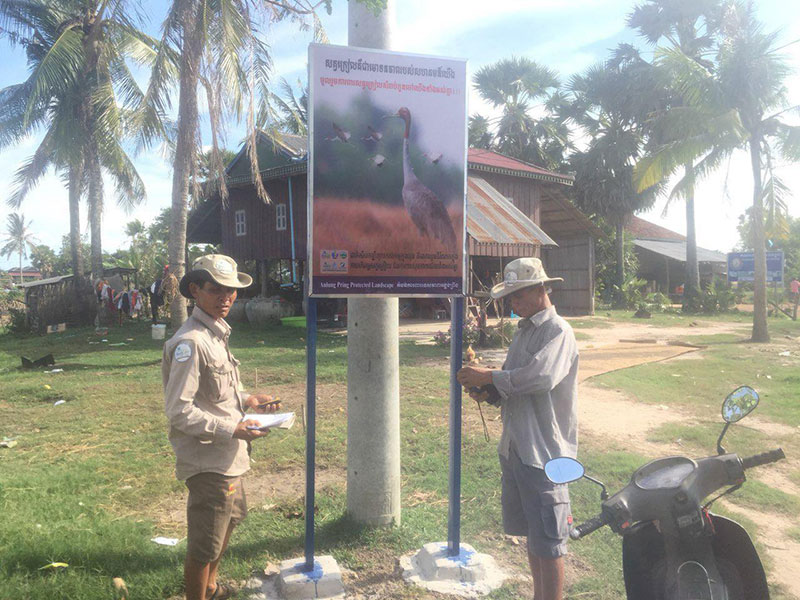
Seven signboards for awareness raising were installed in AP and BPL
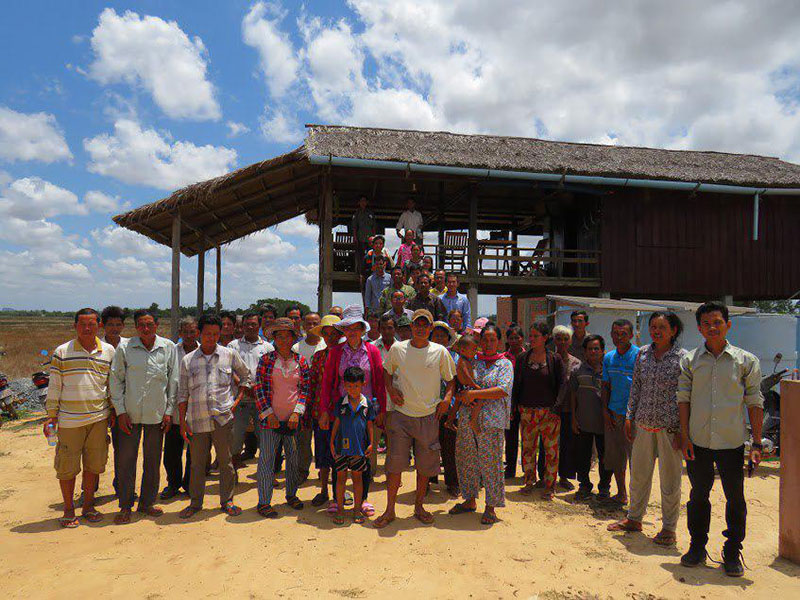
To promote the local people to bring their Agriculture
hazardous waste to put in Waste storage near their house
Agriculture Hazardous Waste Management
Seven signboards for awareness raising were installed (5 in AP and 2 in BPL) in May, 2019. The purpose of this awareness signboard is to inform and encourage the local people to reduce the amount of chemical pesticide and fertilizer uses in their rice paddies in AP and BPL. Moreover, the signboard also encourages the local people in AP to keep their agricultural hazardous wastes in storage boxes as a part of community based agriculture hazardous waste management pilot project.
In early May, we got agreement from local people to install Agriculture Hazardous Waste (AHW) storage boxes on their land with pleasure. The installation of AHW storage boxes have been completed by the end of June but additional coloring and information of storage boxes have not been done yet, it needs to be done for obtaining more attraction in near future. The awareness raising program to encourage local people to put AHW in the storage was conducted three times between April and June. In total, there were 380 local people participated. For the AHW disposal system development, we decided to cancel because of disposal system don’t have enough capacity to dispose and we decide to find alternative to solve that problem.
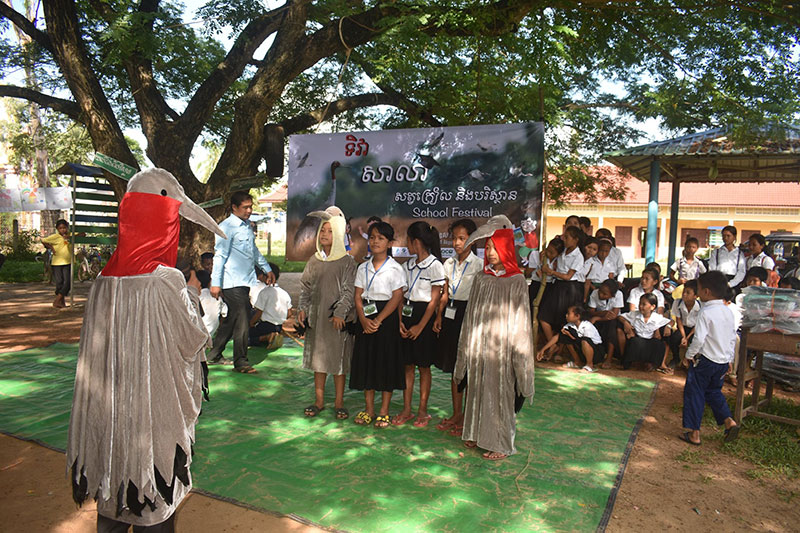
The students enjoyed role play game on the Sarus Crane
and people living together in the school festival in AP
Awareness Raising Events
Samphors and Lyan organized a new awareness raising event “School Festival” in Thmor Berk Primary School in AP on 31 May, 2019. It was supported by BirdLife International Cambodia programme, NatureLife, WWT and Mlup Baitong and three Primary schools and two secondary schools in AP. The objective of this event is to provide opportunity for local students to speech out what they have been learnt about crane and environment. There were 300 participants including relevant NGOs, commune chief, community based ecotourism committee, district education officers and students. “People and Sarus Crane living together in harmonization” and “Eco-Tourism contribute to local livelihood improvement” are the topics raised and performed as role plays during the event by students from two target primary schools. Public speaking were done by students from Thmor Berk and AngChum TropengChruk secondary schools focused on the negative impact of using pesticide and fertilizer on the local communities and the Sarus Cranes. In addition, 36 kids from Koh Thout primary school joined the drawing competition on topic “Clean environment in my village”. In general, all participants enjoyed the programs, kids gain more knowledge and brave to speak out while local authority and relevant stakeholders were encouraged to review their responsible on above raised topics.
Ministry of Environment, Cambodia celebrated the 70th anniversary of the International Children's Day on 8 June, 2019. Minister of Environment joined the ceremony that contained several activities including bird & flower exhibition, dancing, fashion shows and children’s art work were organized to improve kids’ knowledge. Lyan joined to show the crane conservation project in BPL and AP.
After finishing the 10 lesson in June, we are going to do the evaluation and identify the key success and challenges based on result of year 2 of the environmental education program. The Sarus Crane film show will be organized in the primary school and villages around BPL. The importance of the wetlands and Sarus Crane and how to manage the agriculture hazardous wastes (AHW) will be promoted by using the mobile audio broadcast in AP as an AHW management program. The additional coloring and information that are added on AHW storage will be installed, and we will work together with Kampong Trach district hospital to learn about their method in storing the hazardous waste storage. Beginning of raining season is the best time to remove Mimosa pigra (invasive species) before the flooding, thus we will remove the species in July. Lyan will be a member of BirdLife team to organize the International Vulture Day to improve his capacity in organizing educational campaign.

Activities by Mlup Baitong

The project produced 100 sheets of teaching poster
for junior secondary schools in AP
Environment Education Material Development
Mlup Baitong published 500 environmental education textbooks and 50 teacher guide books for Junior secondary schools and distributed them to the target Junior secondary schools. We also facilitated Ankor Chum and Trapaing Chuk Junior Secondary Schools in AP to develop 13 topics of posters for teaching aid. 100 sheets of posters were printed out and distributed to the junior secondary schools.
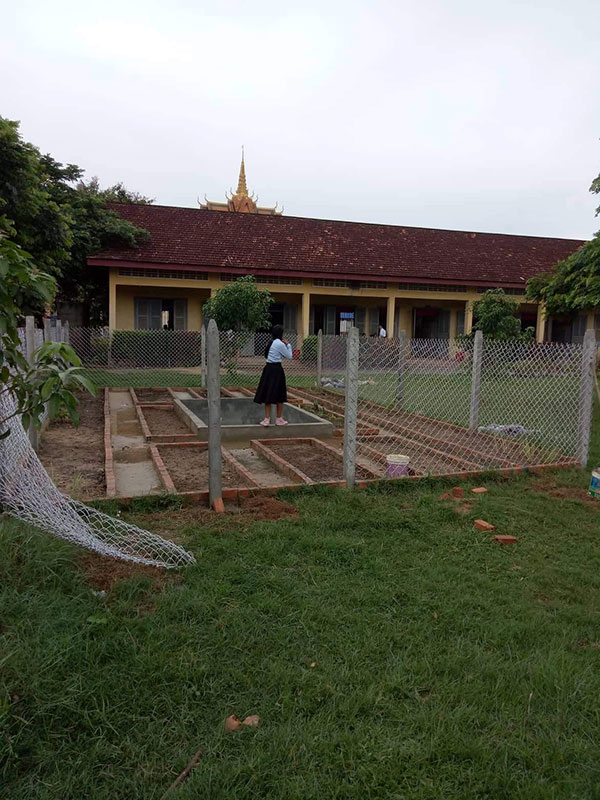
School bio-gardening at Trapaing Chhuk Junior Secondary School in AP
Eco-school Establishment
We supported seven target schools to implement eco-school activities such as schools built bio-garden for students to learn different type of plants and its importance, planted trees to mini-forest garden. These supports contributed to simplification of eco-school implementation including teaching and learning activities.
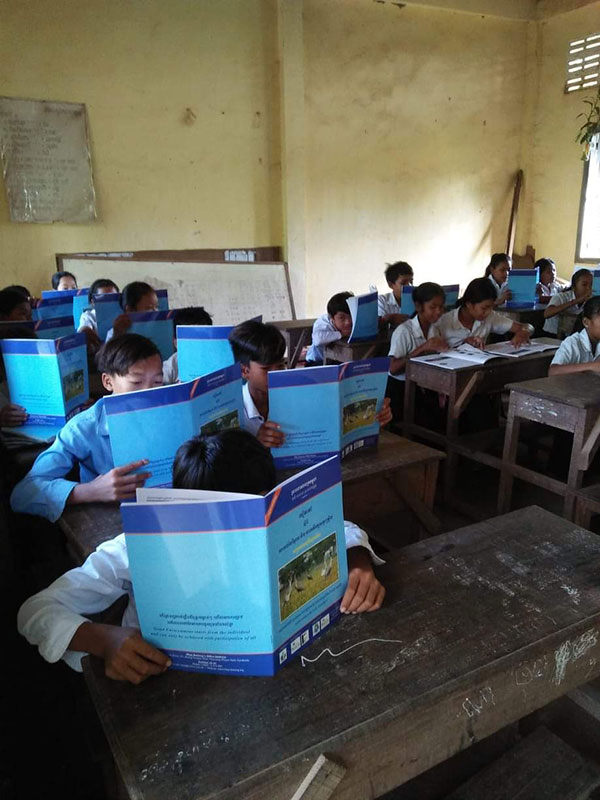
Environmental education program for junior secondary students in AP
Environmental Education Program
The trained teachers delivered environment training sessions on lesson 9 and 10 for primary and junior secondary school students.
We are going to 1) conduct meetings to follow up utilization of environment education materials; 2) facilitate the target schools to implement Eco-school (ES) activities; and 3) Environmental education program
